*This site contains affiliate links, which means I receive a commission when you buy. See my full disclosure.
Summer is the most popular season when people visit Spain. As the days get warmer, the population seemingly doubles. As a resident of Barcelona, I have an “enjoyment strategy” when I go downtown. Why? It’s hot, crowded, and uncomfortable. The same goes for many popular cities in Spain. They are scorching hot. This is why I’ve created this ultra-practical guide on maximizing your trip and getting the best of the summer in Spain! I’m covering the hottest hotspots, coolest beaches, fun festivals and events not to miss, and serene escapes to beat the heat and crowds. I’ve curated realistic Spain travel tips to ensure a comfortable, safe, and fulfilling Spanish summer vacation. Read on!
Table of Contents
ToggleHottest Hotspots: Top Summer Destinations
Spain has always been a tourist magnet, mainly for its sunshine and beaches, mixed with Roman and Moorish history, incredible museums, and architectural beauty. So it makes sense to visit Spain in the summer – just be prepared for inconveniences!
Before I continue: open a tab to read these articles: What to pack in Spain in summer (a straightforward packing list) and summer Spain fashion guide (how to stay stylish and comfortable!)
Barcelona: The Unbeatable Beauty
Barcelona has modernist marvels like the Sagrada Familia, Park Guell, the historic district of Barri Gòtic, views from Tibidabo and Montjuic, and its refreshing beaches. But it’s hot, humid, and crowded. (28 to 31 degrees Celsius (82 to 88 degrees Fahrenheit)). If you prefer a more relaxed atmosphere, consider staying near the beach area, even though temperatures there can still be warm. This way, you can enjoy both the city’s attractions and the refreshing beach ambiance. Also, the humidity is high here, and if you’re a sweat-er, you will be one dripping mess.
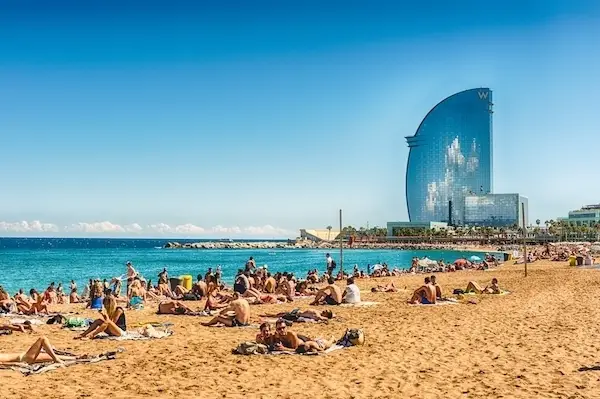
Madrid: Mad City Central
Madrid, the cosmopolitan capital city of Spain, stands as a perennial favorite among travelers. The city has world-class museums like the Prado Museum which displays masterpieces by artists like Velázquez and Goya. The historic architecture, epitomized by landmarks such as the Royal Palace and Plaza Mayor are also such decorous landmarks. Madrid’s culinary scene is also exciting, with food markets like Mercado San Miguel and elegant tapas bars. But the city is literally situated in the middle of the country. It’s landlocked! The city is situated at a higher elevation than Barcelona, and its inland location contributes to the more intense heat. While both cities can be warm during the summer, Madrid generally experiences higher temperatures and lower humidity levels than Barcelona. To stay cool, take advantage of shaded parks like Retiro Park, indulge in ice cream and plan indoor activities during the peak heat hours.
Seville: Sumptuous and Steaming
Seville is one of my favorite cities with it’s flamenco shows, Seville Cathedral (the largest Gothic cathedral in the world), Moorish Alcazar building, and white-and-mustard buildings. It’s a passionate city that just glows beautifully in the sunshine! It’s also an ultra-popular Spanish destination. Be prepared to suffocate in the dry heat. Yes, I have been here many times in the summer – my in-laws live here. It is considered to be one of the hottest cities in Spain, almost unlivable. Temps reach 40ºC (104ºF) up to 45ºC (113ºF).
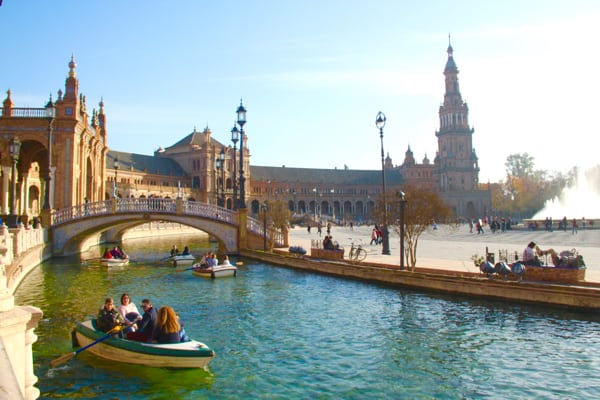
If you come to Andalusia, cities like Seville, Granada, or Cordoba, come in June for a more comfortable summer experience when temps relatively cooler. June allows you to explore the captivating attractions of Southern Spain, such as Seville’s historic Alcazar, Granada’s exquisite Alhambra, and Cordoba’s mesmerizing Mezquita, all while enjoying milder weather before the peak of summer heat sets in.
Marbella: Glamour on the Sea
Meanwhile, Marbella on the Costa del Sol exudes luxury and glamour, drawing celebrities and jet-setters to its sun-kissed beaches. In the past year, Málaga has been the “it” city: it’s invited many international companies to set up shop there. And now it is BOOMING. (We know four families who moved there in 2023.)
Valencia: Past and Future
Valencia has the awe-inspiring City of Arts and Sciences, an avant-garde complex featuring futuristic architecture and interactive exhibits. It also has the Silk Exchange, a UNESCO-listed Gothic masterpiece. Its Old Town has alleys, vibrant squares, and the Valencia Cathedral, blending medieval charm with modern life. During the summer, temperatures range from 25 to 35 degrees Celsius (77 to 95 degrees Fahrenheit). To beat the heat, explore the futuristic City of Arts and Sciences early in the morning, take a refreshing dip at Malvarrosa Beach in the afternoon, and savor the cool breezes along the Turia Gardens in the evening.
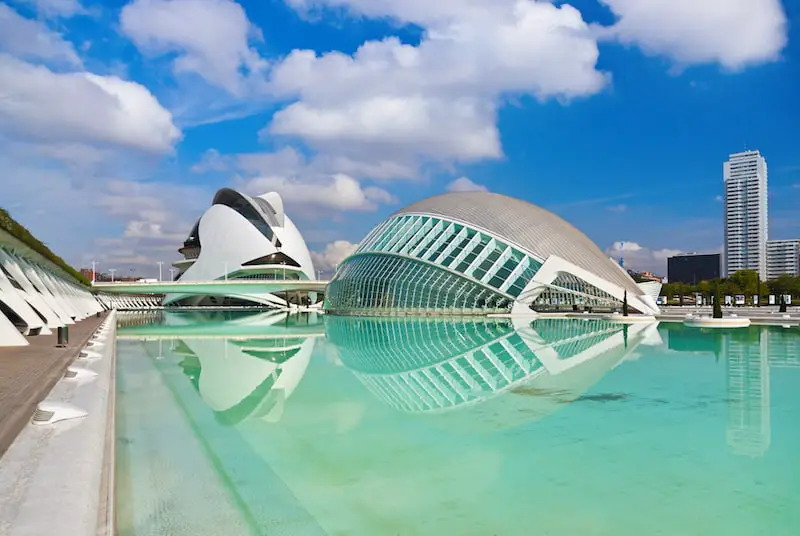
Best Summer Vacation Places to Beat the Crowds
Northern Spain: Maximum Comfort
Asturias: Cool Mountains
In the lush landscapes of Northern Spain, Asturias is a stunning blend of mountains, coastlines, and green valleys. The Picos de Europa National Park, a crown jewel of Asturias, offers breathtaking vistas and mecca for hikers and nature lovers.
The picturesque seaside town of Cudillero, with its colorful houses cascading down the cliffs, is a postcard-worthy destination.
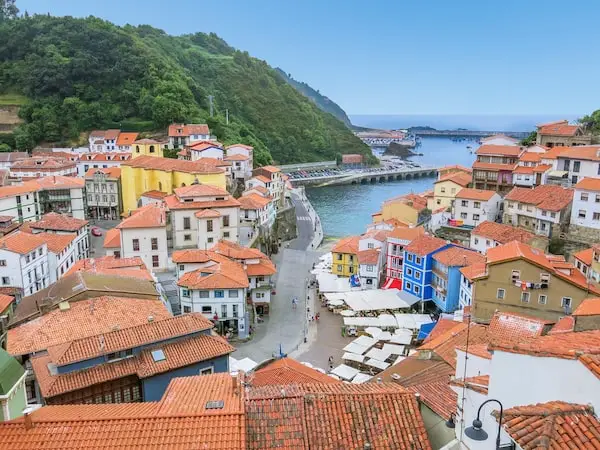
Asturias is also celebrated for its cider, and a visit to a traditional “sidrería” provides an authentic taste of the region’s culture. For a coastal escape, the serene beaches of Llanes and Ribadesella have their golden sands and turquoise waters, making Asturias an idyllic retreat for those seeking a harmonious blend of nature and culture.
Galicia: Mystical Landscapes
Galicia, with its misty landscapes and Celtic influence, enchants visitors with a sense of mystique. Santiago de Compostela, a UNESCO World Heritage Site, is renowned for its historic cathedral and is a spiritual destination for pilgrims on the Camino de Santiago.
Lugo, known for its well-preserved Roman walls, while A Coruña boasts a stunning seaside promenade and the iconic Tower of Hercules, a Roman lighthouse. In Pontevedra, travelers can explore charming medieval streets and visit the Sanctuary of the Virgin of Peregrina, and Ourense, famous for its hot springs, invites visitors to relax in thermal baths and discover the medieval Ourense Cathedral. Summer temperatures in these Galician cities typically range from 20 to 30 degrees Celsius (68 to 86 degrees Fahrenheit), providing a pleasant climate for exploration.
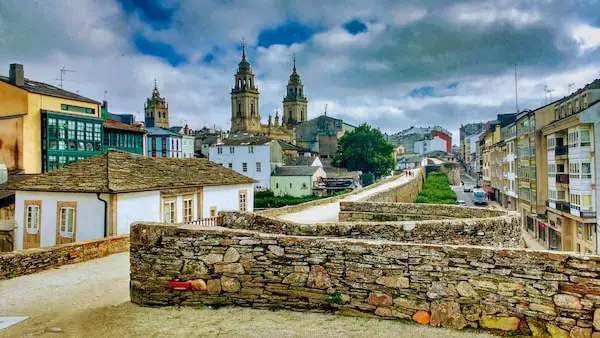
The Rías Baixas lure travelers with their fjord-like estuaries, vineyards, and charming coastal villages like Combarro, Sanxenxo, or Panxón.
The coastal city of La Coruña boasts a historic old town and the Tower of Hercules, a Roman lighthouse. Galicia’s cuisine is a seafood lover’s delight, with dishes like pulpo a la gallega (Galician-style octopus) showcasing the region’s maritime flavors. From the rugged beauty of the Cíes Islands to the tranquil landscapes of Ribeira Sacra, Galicia unfolds as a region where history, nature, and cuisine converge.
Basque Country: Celtic Vibes
The Basque Country, also known as Pais Vasco, is radically different than the rest of Spain. Even the language is weird “agur” means “goodbye”. What?! Yes, it is strange, which is what makes it so unique than the rest of Spain.
Bilbao, a vibrant metropolis, is home to the iconic Guggenheim Museum, a masterpiece of contemporary architecture. It also is an incredible foodie haven!
San Sebastián, with its crescent-shaped La Concha beach, invites visitors to indulge in its culinary delights, boasting numerous Michelin-starred restaurants.
The historic town of Hondarribia, has a well-preserved medieval quarter. Basque Country is synonymous with “pintxos,” small and intricately crafted tapas, making a stroll through the pintxos bars of cities like Bilbao and San Sebastián a gastronomic adventure.
The coastal landscapes, including the rugged cliffs of Gaztelugatxe, add a touch of natural splendor to this region, making the Basque Country a captivating blend of urban sophistication and scenic beauty.
Small Towns to Escape the Summer Crowds
Escape the tourist throngs and discover Spain’s best-kept secrets in enchanting hideaways that offer an intimate and authentic experience. Nestled away from the hustle and bustle, destinations like Cuenca, Ronda, and Altea unveil a more tranquil side of Spain.
Cuenca, with its suspended houses clinging to cliffs, provides a surreal and captivating atmosphere that feels like stepping into a medieval dream.
Ronda, perched dramatically atop a gorge, exudes romantic charm and offers breathtaking vistas without the crowds. Altea, a coastal gem on the Costa Blanca, enchants visitors with its narrow cobblestone streets, whitewashed buildings, and a serene ambiance that contrasts the liveliness of more popular beach destinations. These secret hideaways allow you to immerse yourself in local culture, explore hidden gems, and savor the beauty of Spain away from the well-trodden paths.
Chill Vibes by the Coast: Best Beaches for Relaxation
While Spain is famed for its lively beaches and energetic seaside towns, there exists a serene side to coastal life, where tranquility and relaxation take center stage.
Seek out the lesser-known stretches of sand and hidden coves that offer a peaceful escape from the bustling crowds. Imagine the untouched beauty of Bolonia Beach in Tarifa, where golden sands meet crystal-clear waters, providing an idyllic backdrop for a leisurely day by the sea.
Explore the unspoiled Playa de Rodas in the Cíes Islands, a pristine paradise with powdery white sand and emerald waters.
For those yearning for seclusion, the rugged Cala Macarella in Menorca has secluded charm and gentle waves. These coastal havens not only provide a retreat for sunbathing and swimming but also allow visitors to unwind in the lap of nature, far away from the summertime hustle. Discover the art of relaxation at these hidden coastal gems, where the soothing rhythm of the waves becomes the soundtrack to your Spanish summer escape.
Cooling Culinary Experiences in Spain in Summer
What to Eat in Summer
These are local foods that are in season.
- Gazpacho: A quintessential summer dish, gazpacho is a cold tomato soup blended with peppers, onions, cucumbers, garlic, and seasoned with olive oil and vinegar.

- Salmorejo: Similar to gazpacho, salmorejo is a thicker cold tomato soup, originating from Andalusia. It’s typically garnished with hard-boiled eggs and Jamón (cured ham). The dish has its roots in Andalusia, especially in cities like Córdoba, where it’s so good!
- Paella de Mariscos: Seafood paella is a classic summer dish, featuring a flavorful combination of rice, saffron, vegetables, and an assortment of fresh seafood like shrimp, mussels, and calamari.
- Pulpo a la Gallega: This Galician-style octopus dish is perfect for summer, featuring tender octopus slices drizzled with olive oil and sprinkled with paprika, salt, and sometimes potatoes. You’ll find it in Galician towns in the Northwest like Santiago de Compostela, Vigo, and La Coruña.

- Tortilla Española: This is a year-round dish. A versatile and cooling option, this Spanish omelet made with eggs, potatoes, and onions can be served at room temperature, making it great for picnics and light summer meals. You can eat it warm or cold!
- Grilled Sardines (Espetos de Sardinas): Espetos de sardinas, or grilled sardine skewers, are a popular dish along the southern coast of Spain, particularly in the regions of Andalusia and the Costa del Sol.
- Ice Cream (Helado): Cooling down with ice cream is a universal summer treat. Spanish helado comes in various flavors, and unique options like turrón (nougat) and horchata are particularly popular.
What to Drink in Summer
- Sangria: A classic Spanish summer drink, sangria is a delightful blend of red wine, chopped fruits (such as oranges, lemons, and berries), sugar, a splash of brandy, and soda water. It’s a fruity and refreshing beverage often enjoyed at social gatherings and outdoor events.

- Tinto de Verano: Translating to “red wine of summer,” this drink is a simpler alternative to sangria. It typically consists of red wine mixed with soda, sparkling water, or lemon-flavored soda. Tinto de Verano is lighter than sangria, making it a popular choice for warm afternoons.
- Vermut is a popular aperitif traditionally enjoyed by sipping over ice, often garnished with a slice of orange or a green olive. Locals (especially in Catalunya) go to have a vermut before lunch as a cool refresher on a weekend.
- Agua de Valencia: Originating from the city of Valencia, this cocktail is a mix of orange juice, cava (Spanish sparkling wine), vodka, and gin. It’s a bubbly and citrusy drink that adds a festive touch to summer celebrations.
- Horchata: A traditional Spanish beverage, horchata is a refreshing drink made from ground tiger nuts, sugar, and water. It has a sweet and nutty flavor, often served over ice. Horchata is particularly popular in the region of Valencia.
- Clara: Also known as “Shandy” (a brand) in other countries, Clara is a light and thirst-quenching drink made by mixing beer with lemon-flavored soda or lemonade. I consume it all summer! It’s a refreshing drink without too much alcohol.
- Cava: Spain’s sparkling wine, cava, is a great choice for toasting and celebrating during the summer months. Crisp and effervescent, cava is like France’s champagne and is drunk as such.
- Granizado: Perfect for cooling down on hot days, granizado is a slushy drink made by blending ice with various flavors such as coffee, lemon, or fruit. It’s a popular street food item during the summer.

- Casera: Casera is a brand, and it’s a popular choice for those looking for a non-alcoholic, carbonated refreshment. It’s a type of sparkling water that can be enjoyed on its own or mixed with a splash of lemon or lime for added flavor.
Best Things to Do in Spain: Summer Concerts and Festivals
- Primavera Sound (Barcelona): A prominent music festival held in Barcelona, featuring a lineup that spans various genres, from indie and rock to electronic and hip-hop.
- Sonar Festival (Barcelona): A leading electronic and advanced music festival, Sonar attracts top DJs and electronic music artists from around the world.
- Benicàssim International Festival (FIB): Known as FIB, this festival in Benicàssim is one of Europe’s premier music festivals, featuring a diverse lineup of indie, rock, and electronic music.
- Mad Cool Festival (Madrid): A major music festival in the heart of Madrid, Mad Cool hosts international headliners across genres like rock, pop, and electronic music.
- Flamenco Festival (Various Cities): Held in different cities across Spain, the Flamenco Festival celebrates the traditional art of flamenco, featuring performances by renowned flamenco artists.
- San Fermín Festival (Pamplona): Famous for the Running of the Bulls, this festival in Pamplona also includes live music, traditional dance, and cultural events.
- La Tomatina (Buñol): While not a music festival, La Tomatina in Buñol is a unique and world-famous event where participants engage in a massive tomato fight. The festival also has live music and festivities.
- Starlite Festival (Marbella): Held in a unique venue, the Starlite Festival in Marbella combines live music, film, fashion, and gastronomy for a glamorous summer experience.
- Bilbao BBK Live (Bilbao): A popular music festival in Bilbao, known for its diverse lineup of rock, pop, and electronic artists, set against the stunning backdrop of the Basque Country.
Navigating the Crowds: Travel Tips for a Worthwhile Summer in Spain
- Explore popular spots in the early morning or late evening when the crowds are still enjoying their siesta. You’ll have the attractions to yourself and the morning sun is a bonus.
- Mondays and Wednesdays are like the hidden gems of less crowded exploration.
- Take a siesta. When the sun is high, embrace the siesta life, which is from 2-5pm.
- Wander where the locals wander. Dive into side streets, discover hidden cafes, and get lost (figuratively) in residential neighborhoods, especially in Madrid or Barcelona. For example, Barcelona holds main events like Carnival or the Three Kings’ Parade, but its 10 districts have their own smaller version of the same event.
- Ask locals where to go. When you’re at your destination, ask waiters, hotel concierge, and other places for recommendations. Where do they themselves eat for a great meal? It may be around the corner!
- Book in advance. Do this especially for popular sites to visit like the Alhambra in Granada, or the Sagrada Familia in Barcelona.
- Keep an eye out for local events. Whether it’s a small market or a big festival, these gatherings are not only culturally rich but also a great way to dodge the tourist masses.
- Stay flexible with your plans. If Plan A seems too crowded, embrace Plan B or C. Spain is full of surprises, and the best stories often come from the unexpected detours.
FAQs
What are the summer months in Spain?
The summer months in Spain typically span from June to August, with temperatures soaring across the country.
Is Spain good in summer?
Spain is indeed fantastic in the summer! It’s when you have exciting cultural festivals, beach escapes, and cultural experiences. But travelers should be prepared for high temperatures in some region like central / inland Spain and southern Spain.
What part of Spain is coolest in the summer?
The northern part of Spain, also called “Green Spain”, including regions like Galicia, Basque Country, and Asturias, tends to be cooler in the summer compared to the scorching temperatures in the central and southern regions, providing a cool escape from the heat.
So, I’ve become very passionate recently about visiting all of Spain since I’ve been researching for a client. I haven’t been to all these Spain destinations, but I am learning about them as I do more research. Luckily, I’ve been to many places, but I still want to go back to San Sebastian and Santander, Toledo, Ávila, and so much more!
Any questions? Let me know in the comments!
